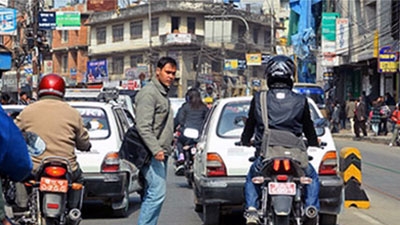Meeting of UN Partners
On April 16-17, the World Bank hosted a meeting with United Nations (UN) partners in Washington, D.C., to strengthen efforts to support road safety action in the developing world ahead of a UN General Assembly debate on road safety on April 19.
The 15th UN Road Safety Collaboration Meeting brought together representatives of the World Health Organization (WHO), UN regional commissions, international agencies, governments, foundations, civil society organizations (CSOs), and private sector entities.
Together, they reviewed progress on the UN Decade of Action for Road Safety 2011-2020, which aims to save 5 million lives and prevent 50 million serious injuries by helping countries around the world improve their road safety outcomes, for instance through better road safety management, safer vehicles and roads, and post-crash care.
“Our priority is to protect the poorest and most vulnerable road users: pedestrians, cyclists, motorcyclists, and users of public transport,” explained Tawia Addo-Ashong, program coordinator for the Global Road Safety Facility (GRSF). “The UN Decade of Action provides a framework to help us do what needs to be done.”
Cooperation Between Development Banks
The GRSF is the focal point for road safety at the World Bank and is coordinating an initiative between eight multilateral development banks (MDBs) looking to harmonize their approaches to country road safety interventions.
The participating banks are the African Development Bank, Asian Development Bank, development bank of Latin America, European Bank for Reconstruction and Development, European Investment Bank, Inter-American Development Bank, Islamic Development Bank, and the World Bank.
According to Dr. Etienne Krug, director of the WHO Department for Violence and Injury Prevention and Disability, “The development banks can play a key role during the Decade of Action by ensuring that the safety of citizens is prioritized in loans for road building.”
Boosting Road Safety Capacity in the Developing World
The UN Collaboration meeting announced several new developments aimed at boosting the road safety capacity of low- and middle-income countries. These include CAF (development bank of Latin America) joining the MDB Road Safety Initiative and the launch of a new road safety observatory for Latin American countries to help improve data collection and information on road traffic crashes in the region.
The Government of Singapore and the GRSF are also establishing a new International Road Policing Organization (RoadPol) Secretariat in Singapore.
For Anselm Lopez, director at the Ministry of Home Affairs in Singapore, “Road safety policing in the developing world needs greater support to achieve results in protecting citizens.” An important role for RoadPol will be to promote higher standards of policing.
Involving Civil Society
Civil society groups also have a critical role to play in action and advocacy on road safety, and the GRSF and Safe Kids Worldwide are hosting a discussion with CSOs on April 18 to explore how they can become more involved.
Safe Kids is part of the newly established Global Alliance of NGOs for Road Safety, which aims to be a coordinating body for NGOs working on road safety and contribute to the influence and visibility of their initiatives.
The discussion with CSOs will be webcast live on the World Bank website.
Contributed by Cathy Russell, Senior Communications Officer, World Bank Department of Transport, Water, and Information & Communication Technologies


